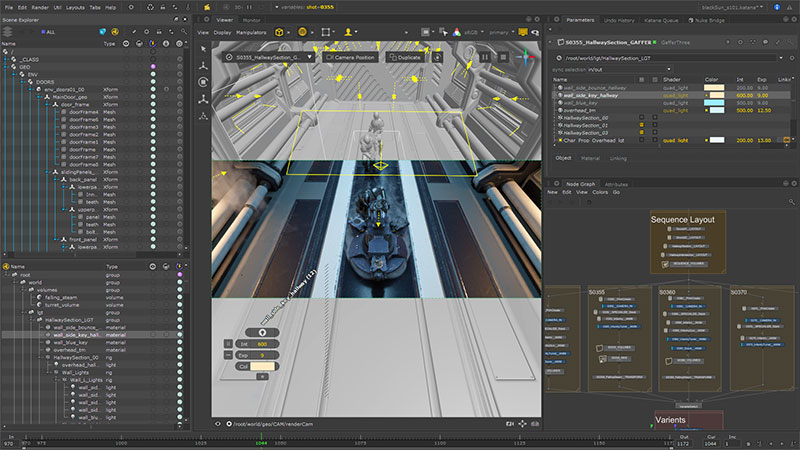Foundry’s Katana 7.0 makes it possible to work with USD native scenes and workflows while using Katana’s lookdev and lighting tools, helping it to fit more smoothly into pipelines.

Foundry’s Katana 7.0 makes it possible to work with USD native workflows while using Katana’s lookdev and lighting tools. With a shared framework with Nuke, and a core series of nodes that enable native USD 23.05 scene manipulation, Katana will fit more smoothly into pipelines, intending to save development time and effort. Also, following a series of performance improvements, Live Rendering is now multi-threaded making Live Render updates to assets up to twice as fast, according to Foundry.
Foundry is making dual releases of Katana available, so that artists can use the new features in production now, while testing their pipelines against the recent Linux releases. So, Katana 7.0 is released along with Katana 6.5 – they have nearly identical feature sets but come with different VFX Reference Platform support.
USD scene manipulation in Katana 7.0 is built on the same underlying architecture as Nuke’s new 3D system. USD’s ability to simplify workflows supports collaboration across tools, platforms and teams. Katana 7 introduces USD Native, allowing the import, composition and manipulation of USD data inside Katana.

USD scene manipulation
Expanding on the original USD Katana nodes allowing users to bring USD into Katana, a new selection of nodes accesses USD and Katana together. Users can now work with both native USD workflows and existing Katana features. This makes transitioning to a USD pipeline more flexible by keeping various advantages of Katana, such as deferred loading, multi-shot workflows, Foresight+, Nuke Bridge and so on.
Note that the multi-threading now added to Live Rendering is compatible with Foresight+, which allows Katana to support simultaneous renders and networked interactive rendering. The combination results in an effective tool for artists who need scalable feedback for rapid iterations.
Geolib3-MT Runtime has been optimised to improve memory management. With new caching strategies, it is now more scalable and robust. By optimising re-use of computed scene data during multithreaded scene evaluation, it can prevent memory overload to ensure the render will fit on the farm.
All three of Foundry’s new releases – Katana 7.0, Nuke 15.0 and upcoming Mari 7.0 – support standards across the industry, including compliance with VFX Reference Platform 2023. Foundry is currently testing its new software on Rocky Linux 9.1, with testing on matching versions of AlmaLinux and Red Hat Enterprise Linux.
Foundry is hosting a webinar about Katana 7.0 on 14 November 2023. More information is available here. www.foundry.com


